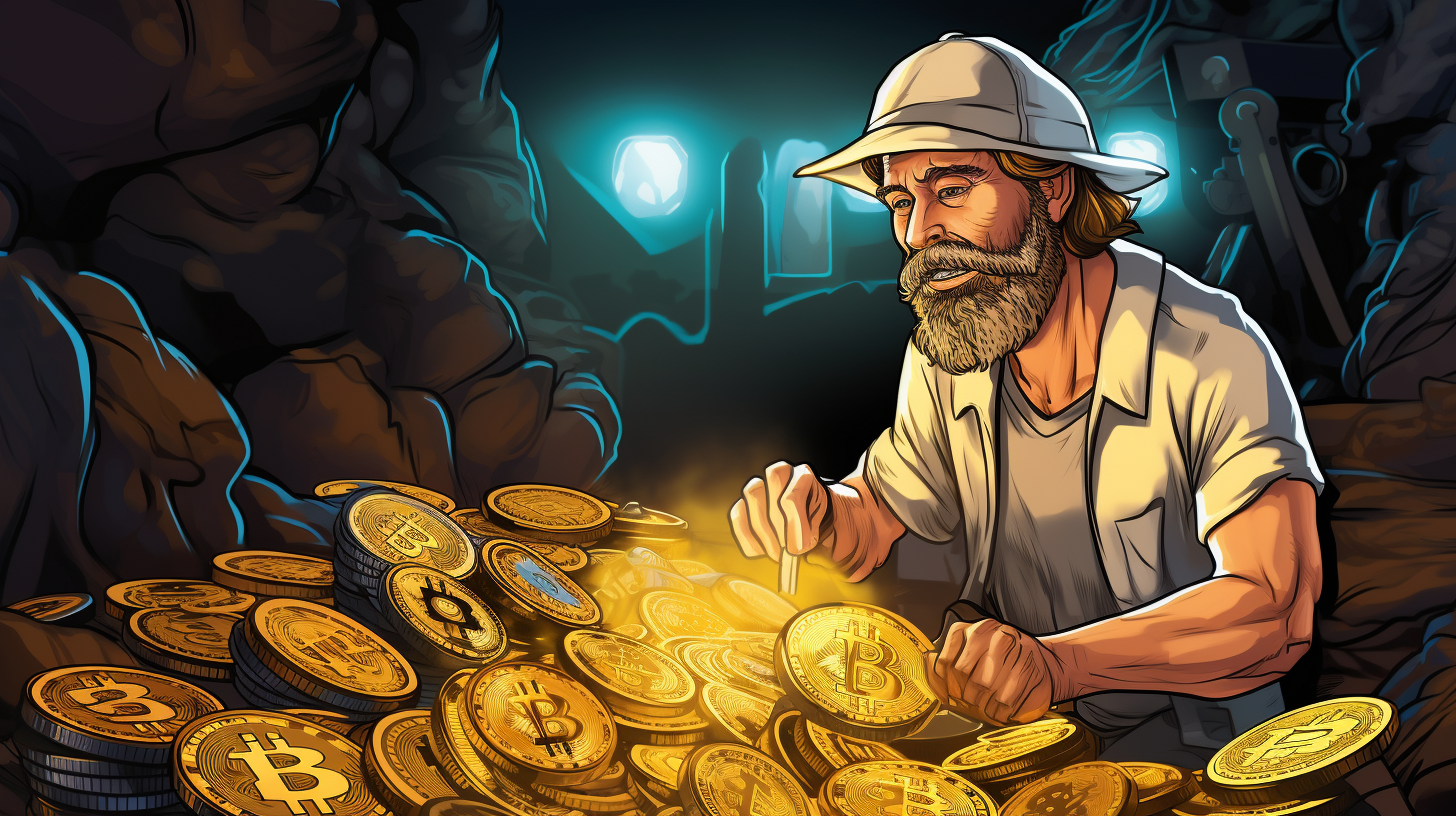Amidst the digital age, an intriguing paradigm shift has likened crypto miners to the agrarians of a bygone era. Picture the rolling hills and fertile plots of land, once tended meticulously to yield sustenance for society. Now transpose that image to a grid of advanced computing rigs operating ceaselessly. Here lies the heart of our inquiry: Are Crypto Miners the New Farmers?
‘A society flourishes when old men plant trees whose shade they know they shall never sit in.’ This ancient adage finds unexpected resonance in today’s world where cryptocurrency miners are planting the seeds of an intricate blockchain ecosystem. In their quest for digital ‘crops’ – be it Bitcoin, Ethereum, or various other altcoins – miners are gradually becoming a cornerstone of our socioeconomic infrastructure.
Historically, farmers were venerated custodians of food security, leading revolutions from agricultural to industrial. Similarly, present-day crypto miners are on the cusp of leading a financial revolution, ensuring the security and perpetuation of decentralized digital economies. They share more than you might think: both demand a significant upfront investment, a profound knowledge of the system’s inner workings, and a patient commitment to long-term processes. Yet, as with traditional farming’s resource intensity, crypto mining has been critically observed for its substantial energy consumption.
The concept of energy harvesting has taken root in the crypto world, much like the development of sustainable farming techniques emerged to address environmental concerns tethered to agriculture. Innovative initiatives – as described in our prior article titled ‘Eco Tokens and Energy Grids: Cryptocurrency’s Green Revolution’ – now strive to reduce the carbon footprint of cryptocurrency mining, akin to farmers utilizing regenerative practices to enrich their soil.
New consensus models, such as proof of stake, mirror agricultural advancements offering a more energy-efficient alternative to the traditional proof of work protocol, much like hydroponics and aeroponics present modern solutions to traditional soil-based farming. Furthermore, peer-to-peer energy trading platforms showcase the first sprouts of a more democratic and decentralized energy landscape, directly paralleling the local farmers’ markets that forge community ties and foster sustainability.
One of the most visionary breakthroughs is the creation of GridTokens, a digital representation of renewable energy that can be bought, sold, or mined. These tokens symbolize the ingenuity of human progress, offering the allure of a cleaner, crypto-powered planet where individuals can stake a claim in the energy market, just as one might own a plot of land.
The democratization of energy echoes the way communal farms revolutionized land ownership. GridTokens and other eco tokens effectively grant every digital wallet holder a ‘piece of the grid,’ empowering people to participate in and benefit from the collective energy surplus. It is an exciting time where a layman with an eco-friendly mining rig in their garage participates in securing a global financial network while simultaneously supporting renewable energy initiatives.
Yet, just as new farming technologies and practices were met with skepticism and logistical hurdles, so too is the integration of these eco-friendly crypto mechanisms. Regulation, technological adoption, and the interplay with existing utilities and financial systems present complex challenges yet to be fully navigated.
In this ripe landscape, where technology meets tenacity, crypto miners are emerging as the neo-farmers of an ever-growing cybernetic expanse. Like any crop, the fruits of their labor are prerequisites for the advancement of society. They are the cultivators of a digital frontier, sowing the seeds of the future’s economy while reaping the harvest of progress and possibility.
To dwell on the question, ‘Are crypto miners the new farmers?’, they certainly are – tilling the virtual landscapes, harvesting the blocks of data, and feeding the insatiable appetite of an ever-expanding digital population. Their tillage, however, depends on the renewable energy sources that power their rigs, thus making the comparison ever so valid and vibrant.
So let us join in this conversation, watching as crypto miners plow through endless computations with a sturdy hand on the ploughshare of innovation, all while keeping their eyes on the fertile horizon of a self-sustaining crypto economy.
